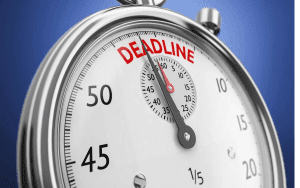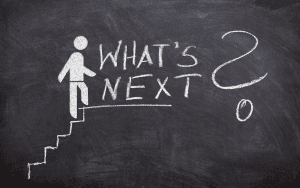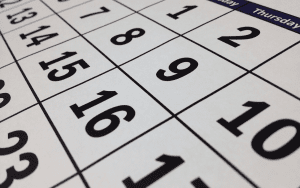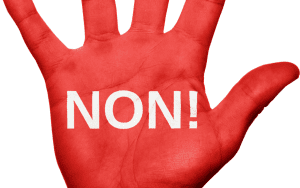Top Essentials for Effective Meetings, Fixing the Problem of Unproductive Meetings at Work.
 The essentials for effective meetings are as crucial as your company objectives because you can only succeed in your aims and purposes with practical sessions, understanding and mutual support.
The essentials for effective meetings are as crucial as your company objectives because you can only succeed in your aims and purposes with practical sessions, understanding and mutual support.
Our opinions on meetings are split. On the one hand, they might be perceived as a distraction from the “real” task and an incursion into the precious work-life balance. Of course, we’ve all sat through meetings that felt like a waste of time.
However, meetings are crucial for making decisions in the workplace. They help teams make choices, share information, and build relationships that lead to more productive collaboration.
How Vital are Meetings, Really?
I was glad to see the Chartered Institute of Personnel Development (CIPD) publish an evidence review on meetings. I spend a lot of time in them and have wondered if they are worthwhile. The CIPD evidence reviews are excellent tools for learning about the workplace, as they compile the research on a specific issue and provide it in an accessible report.
Essentials for Effective Meetings: Why?
Meeting guidelines guarantee that appropriate measures are taken to achieve success. A meeting that achieves nothing is a good use of time and money since it encourages employees to do something while being paid. While it’s true that conforming to regulations might be a pain, it can ultimately save you and your employer precious resources.
Establishing a routine can help you fulfil all of your meeting needs. You can review your schedule every morning, determine which meetings are genuinely required, and plan accordingly.
Top Essentials for Effective Meetings are Bellow
1, Meeting Success: An Experiment
According to research, successful meetings require only two things: an effective meeting leader and well-defined goals.
Leadership: one of the most critical factors in determining whether or not a meeting is productive is the quality of its leadership. Leaders of meetings must be seen as impartial and caring above everything else. This includes actions like:
- Defining the structure of the gathering
- Leaving the floor open for discussion or questions
- Including missing background or information so that everyone in the audience could follow along
- Punctuality (or earliness)
- Avoiding long speeches and refocusing a straying group.
- Input paraphrasing for emphasis and elaboration
A, Meetings Should Begin and Conclude on Time.


Nobody enjoys squandering what little time they have. Meetings should start and conclude on time to show respect for attendees’ time. Setting specific timings for different parts of the meeting agenda is a great approach to keep things moving forward. The host may use a timekeeper to hold the meeting on schedule.
B, Adhere to the Subject at Hand.
Meetings will likely start and conclude on time if attendees stick to the agenda and discussion topics. The timekeeper’s role is to keep track of time and keep the meeting on the way by ensuring that each issue is addressed at the most necessary.
2, Reviewing Final Meeting Decisions
Although it may seem obvious, it is surprising how many meetings we attend that need clear objectives. There is excellent value in briefly restating the meeting’s purpose at the outset. This will influence the conference attendees’ actions, leading to more efficient time use and fewer distractions.
A, Guidelines for More Fruitful Meeting Goals Include:
- Making sure that everyone in the meeting can easily comprehend the goals.
- Making plans that can be carried out using the data at hand. It’s preferable to postpone the meeting until the necessary information is gathered to save time that can’t be used towards the goal.
- Choosing an achievable set of goals. This number will likely be three for a meeting lasting 30 minutes. Maximum of five people; 60 minutes. No one will complain if you complete tasks ahead of schedule and return time to the group.
B, Regulation of Equipment.
In the case of a face-to-face encounter, it’s essential to establish in advance which electronic gadgets will be permitted. Team members are notorious for not paying attention during meetings since they have brought their tablets or computers for other purposes. Or a crucial decision-maker gets a call and has to leave the meeting, rendering the agenda meaningless.
C, Prepare the Equipment For the Meeting meeting in advance.
Problems with technology are an inherent part of working remotely. However, if you prepare your technology beforehand, you’ll have time to devise a backup plan if it doesn’t work during the meeting. The more time you have to set up before the meeting, the more options you’ll have for a reliable internet connection and video conferencing software.
3 , Next Steps That Can be Taken.


After each meeting, actions to be taken and team members to implement them should be outlined.
A W.W.W. list is reviewed at the end of every leadership meeting in our organization. What, Who, and When refers to the tasks, the people responsible for them, and the deadlines they must meet. According to Forbes, North Street creative agency co-founder Tom Conlon said, “This simple tactic has transformed our meetings into meaningful vehicles for solving issues and implementing change.”
Many businesses now distribute meeting minutes to guarantee that all attendees understand the following actions to take and to keep those who couldn’t attend in the loop. This may be an effective method of ensuring that all parties involved in a hybrid workplace are on the same page.
In the end, the point of holding a meeting is to obtain a quorum and move the decision-making process along. Use a meeting agenda, moderator, and targeted outcome to ensure your session achieves its goal when a conversation has to take place and can be handled more successfully in person.
A, Have Well-Defined Next Steps
Meetings that don’t lead to any follow-up are useless. With well-defined next steps, everyone can go forward with confidence. Whether it’s something as specific as completing assignment X or as broad as producing additional content as a group, there should always be something to do after that.
With Fellow, it’s simple to put follow-up tasks on the agenda for a meeting. These tasks might be allocated to a specific team member and given a deadline to encourage responsibility.
B, Distribute Follow-Up Action Items After the Meeting.


To ensure that productivity remains high after you leave a meeting, it’s essential to take action. According to Paul Axtell, a Harvard Business Review writer, sending out clear and concise meeting notes and following up on commitments made are highly effective ways to achieve this. With Fellow, you can easily share these meeting summaries with just one click:
C, Assess How Productive the Gathering Was.
Shep Hyken, a writer for Forbes, proposes asking what could have been done differently to evaluate a meeting’s success. Remember that every meeting has a price tag, from the salary of those there to the time that could be spent more productively. Hyken argues that meetings are time wasters unless they provide tangible results. Find out what went well and what may be improved during your meeting.
Fellow allows its users to survey attendees after a meeting for their impressions of the event, its agenda, and its length. The meeting organizer can gauge the attendees’ satisfaction level and gather suggestions for improving the event.
D, Follow Up With Meeting Minutes and a Follow-Up Email.
After the conclusion of your meeting, guests will get a follow-up email from you. A thank-you email after a meeting is a great way to reinforce positive feelings and build rapport with your staff.
Meeting minutes, a written record of the discussion and decisions taken at the meeting should be sent to your follow-up email. Sending a follow-up email will remind your participants of the critical issues covered at the meeting, and they will remember the email because it was the last thing they saw.
E, Set a Date For the Next Gathering.


Make time to arrange the next meeting before you become bogged down with other tasks. This will prevent sessions from being planned at the last minute and guarantee adequate time for preparation. The next meeting’s date and time should be included at the end of the minutes to gently remind team members.
4, Question and Answers Session
Your meetings should allow for questions, but the meeting may run beyond its authorized time if there are fewer. Timely answers to queries may be ensured by limiting the time spent discussing individual action items.
According to Forbes contributor Avery Blank, here are four guidelines for ensuring that your team is asking the appropriate questions:
- Save time and effort by conducting a swift Google search to answer your question. No need to waste your valuable resources; the answer is just a few clicks away.
- Avoid using terms that make your audience uncomfortable, such as “This may seem stupid, but…”
- Stay within the question mark; once you’ve posed the query, go on to receive responses.
- Ask only two questions quickly; doing so will likely cause your listeners to tune out.
Tips for Running a More Productive Meeting
Interestingly, many joint meeting tactics do not impact productivity.
- We have here an official agenda. There is some evidence to show that formal schedules are not crucial to the success of meetings. The most significant effect may be expected if the goals are well-defined from the outset.
- Procedures for a formal gathering. Once again, studies show that these have little impact on the success of meetings.
- Venue capacity. No matter the size of the gathering, it must be organized and productive.
So, hone your abilities as a host and zero down on the meeting’s purpose if you want to see better results. This allows you to better allocate everyone’s time at work.
Stay Away From Any of These Six Negative Roles.


You have probably been to more business meetings than you remember. With time and introspection, you may identify certain team members as taking on informal leadership positions. Peacekeeper, encourager, and strategist are all positions that can sometimes be useful. On the other hand, some roles, when played to extremes, are useless at best and embarrassing at worst.
Do any of the following six functions jump out at you?
- The Perpetual Jokester: This person’s every utterance seems to be an attempt to make others laugh. The end product is annoying, a waste of time at best, and perhaps unpleasant and improper.
- The Perpetual Romanticist: This individual can’t seem to move on from the past, as they constantly wax nostalgic about the good old days, whether at their present workplace or at a prior one. When asked about the history, the former may paint a beautiful picture. At the same time, the latter may dwell on the organization’s failures and be quick to discredit new ideas because they’ve already been tried and failed.
- The Silent Shadow is in the room with you now, but you wouldn’t see them if you closed your eyes. One kind seems attentive and involved, whereas another seems disinterested and careless. The Silent Shadow, however, makes little to no contribution.
- The Dominant One: This individual takes up a disproportionate amount of airtime, suggesting they are more knowledgeable and deserving of attention. Possible motivations include seeking the limelight and/or influencing proceedings.
- The Perpetual Victim is always complaining about how they, the group, or the company are being wronged by the villain. Those in authority, the law, or even society may be to blame when an individual is mistreated or prevented from taking action.
- The Chronic Critic: This individual has an almost insatiable need to find fault with anything someone suggests. People who are quick to bring out the problems with an idea are much less likely to provide a solution or offer an alternative.
These jobs may have positive features in the right setting and in moderation. Unfortunately, these benefits are lost if the position is pushed to an extreme and becomes the individual’s go-to for how to participate in team meetings.
- If that’s the case, how did you figure it out?
- Is there a team member that stands out from the list above who would be easily recognized by your teammates?
- Do some team members’ words always appear to be met with sighs, rolled eyes, or outright rejection from the rest of the group?
- Perhaps more challenging is the follow-up inquiry, “Might my coworkers see me as chronically taking on one of the listed roles?”
Even if the answer is “yes,” it’s unlikely that you intentionally set out to behave in that way all the time, so giving a truthful answer will need some introspection, honesty, and modesty. If you did not intentionally cultivate that reputation, you presumably have some incentive to alter it.
For more business-related stories, click here,




